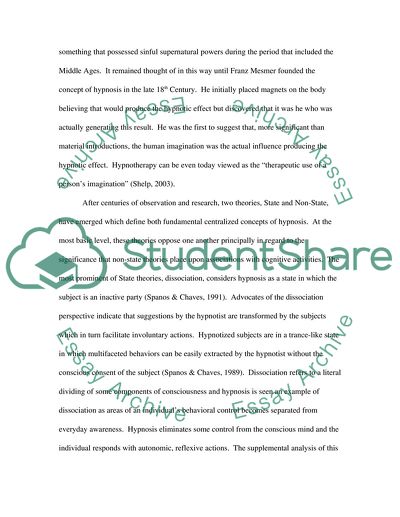Cite this document
(“Hypnosis as a Therapeutic Practice Essay Example | Topics and Well Written Essays - 1250 words”, n.d.)
Hypnosis as a Therapeutic Practice Essay Example | Topics and Well Written Essays - 1250 words. Retrieved from https://studentshare.org/psychology/1542990-psychology-choose-any-topic-in-this-field
Hypnosis as a Therapeutic Practice Essay Example | Topics and Well Written Essays - 1250 words. Retrieved from https://studentshare.org/psychology/1542990-psychology-choose-any-topic-in-this-field
(Hypnosis As a Therapeutic Practice Essay Example | Topics and Well Written Essays - 1250 Words)
Hypnosis As a Therapeutic Practice Essay Example | Topics and Well Written Essays - 1250 Words. https://studentshare.org/psychology/1542990-psychology-choose-any-topic-in-this-field.
Hypnosis As a Therapeutic Practice Essay Example | Topics and Well Written Essays - 1250 Words. https://studentshare.org/psychology/1542990-psychology-choose-any-topic-in-this-field.
“Hypnosis As a Therapeutic Practice Essay Example | Topics and Well Written Essays - 1250 Words”, n.d. https://studentshare.org/psychology/1542990-psychology-choose-any-topic-in-this-field.


